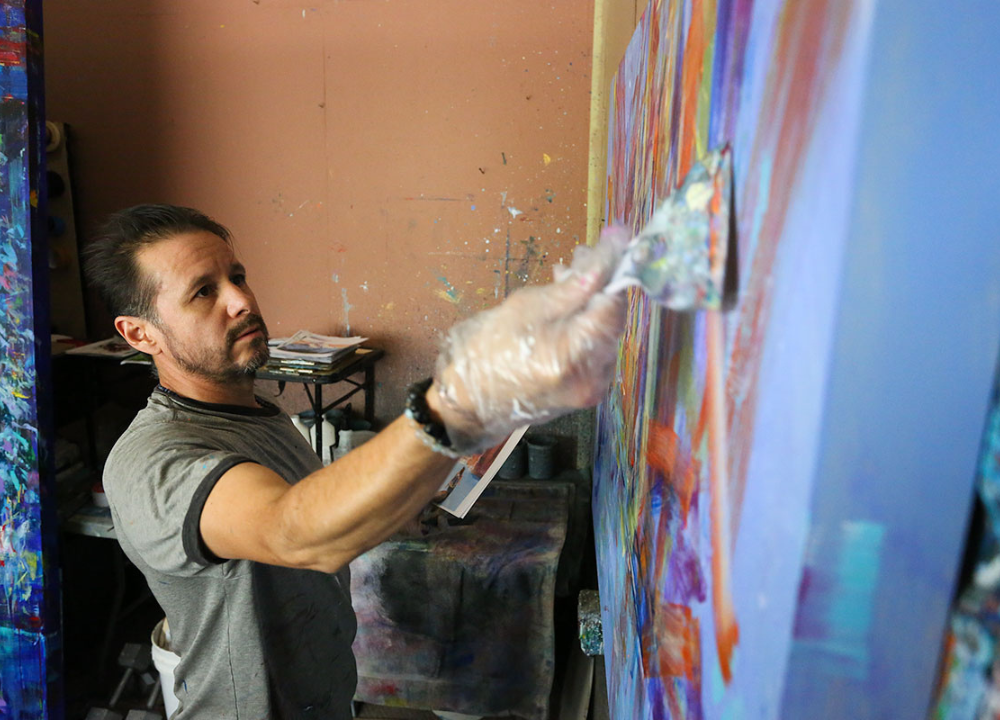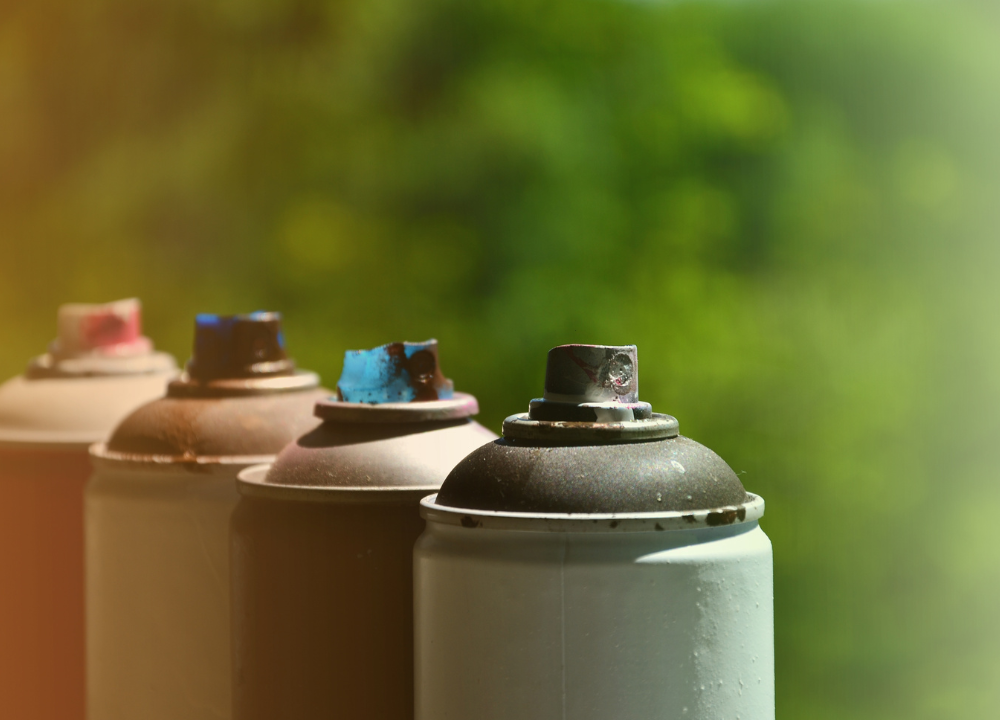Art gallery fabrics enhance visual appeal and texture in curated spaces. These materials elevate artwork while providing unique design elements.
Curating with art gallery fabrics offers an exciting opportunity to blend creativity and design. Fabrics can transform a space, adding depth and character to any environment. By selecting the right textures and colors, you can create a cohesive theme that complements your artwork.
The choice of fabric impacts not only aesthetics but also the overall mood of the room. Understanding how to pair art with appropriate textiles ensures a harmonious balance. This guide will explore various fabric options, their applications, and tips for effective curation. Embrace the potential of art gallery fabrics to make your space truly captivating.
Introduction To Art Fabrics
Art fabrics combine creativity with texture. They are essential in the world of art and design. These fabrics bring life to spaces and add depth to artwork. Understanding art fabrics opens doors to endless possibilities in curating. This guide will explore their role and benefits in enhancing artistic expression.
The Role Of Fabrics In Art
Fabrics play a vital role in art. They serve as a canvas and a medium. Artists use various textiles to express their creativity. Here are some important functions of fabrics in art:
- Texture: Fabrics add a three-dimensional feel to art.
- Color: Different fabrics come in various colors, enhancing visual appeal.
- Emotion: Textiles can evoke feelings and tell stories.
- Layering: Fabrics allow for layering, creating depth and complexity.
Artists can choose from many types of fabrics. Here’s a quick table of common art fabrics:
| Fabric Type | Texture | Common Uses |
|---|---|---|
| Cotton | Soft | Painting, quilting |
| Silk | Smooth | Collages, fashion |
| Linen | Rough | Mixed media, upholstery |
| Canvas | Sturdy | Painting, stretching |
Fabrics can also enhance the overall ambiance of a space. They can transform a room, making it more inviting and artistic. Incorporating art fabrics into your decor allows for endless creativity.
Benefits Of Using Fabrics
Using fabrics in art and design offers many advantages. They can improve the aesthetic and functional aspects of any project. Here are some key benefits:
- Versatility: Fabrics can be used in various projects.
- Affordability: Many fabrics are budget-friendly and easy to find.
- Easy to Work With: Fabrics are simple to cut and sew.
- Eco-Friendly Options: Many sustainable fabrics are available.
Fabrics also allow for unique personalization. Artists can create one-of-a-kind pieces that reflect their style. Here’s a summary of the benefits:
| Benefit | Description |
|---|---|
| Creative Expression | Fabrics inspire new ideas and artistic techniques. |
| Comfort | Soft fabrics create a cozy atmosphere. |
| Durability | High-quality fabrics can last for years. |
Incorporating art fabrics into your projects boosts creativity and enhances beauty. They provide a unique way to express artistic vision and personal style.
Choosing The Right Fabrics
Choosing the right fabrics is crucial in curating your space with art gallery fabrics. The right fabric can enhance your artwork and elevate the overall atmosphere. It’s all about balancing texture, color, and pattern to create an inviting space. Let’s explore two key aspects of fabric selection: natural versus synthetic and the importance of color and pattern.
Natural Vs. Synthetic
Understanding the difference between natural and synthetic fabrics is vital for making informed choices. Natural fabrics come from plants or animals. They offer unique textures and breathability. Synthetic fabrics are man-made, often more affordable, and can mimic natural fibers. Here’s a quick comparison:
| Feature | Natural Fabrics | Synthetic Fabrics |
|---|---|---|
| Origin | Plants and animals | Man-made |
| Breathability | Highly breathable | Less breathable |
| Durability | Can wear out faster | Often more durable |
| Maintenance | Requires special care | Easy to clean |
Consider these points when choosing:
- Comfort: Natural fabrics feel softer against the skin.
- Environmental Impact: Natural fabrics are often biodegradable.
- Cost: Synthetic fabrics can be less expensive.
Decide based on your needs and the ambiance you want to create. Each type has its own charm.
Color And Pattern Selection
Color and pattern play a significant role in fabric selection. They can influence mood and set the tone for your space. Bright colors can energize a room. Soft colors can create a calming effect. Keep these tips in mind:
- Complement Your Artwork: Choose colors that enhance your artwork.
- Consider the Room’s Purpose: Use lively patterns in playful spaces.
- Balance: Mix bold patterns with solid colors for harmony.
Here’s a simple way to choose colors:
- Identify the dominant color in your artwork.
- Select fabric colors that match or contrast beautifully.
- Test fabric swatches in your space to see how they look.
Patterns can add depth and interest. Opt for simple patterns for larger pieces. Intricate designs work well in smaller accents. The key is to create a balance that feels right for you.

Textures That Inspire
Textures can bring art to life. They add depth and interest to any space. Whether soft or hard, textures inspire creativity. Using art gallery fabrics in your home can make it feel vibrant and unique. This guide explores the different textures that can enhance your artwork and living space.
Soft Vs. Hard Textures
Understanding the difference between soft and hard textures is essential for curating art effectively. Soft textures, like fabrics, create warmth. They invite touch and comfort. Hard textures, such as wood or metal, offer structure and strength.
Here are some examples of each:
- Soft Textures:
- Velvet
- Cotton
- Silk
- Faux Fur
- Hard Textures:
- Wood
- Glass
- Metal
- Stone
Combining these textures creates a balanced look. A table below shows how to mix them:
| Soft Texture | Hard Texture | Effect |
|---|---|---|
| Velvet Cushion | Wooden Coffee Table | Cozy yet sturdy |
| Silk Curtains | Metal Frame | Elegant with a touch of modern |
Experimenting with these textures can transform your space. Choose a mix that resonates with you.
Layering Textures Effectively
Layering textures brings a dynamic element to your decor. Start with a base texture, then build upon it. This creates richness and depth in your design.
Here are some tips for layering:
- Choose a Dominant Texture: Pick one main texture to stand out.
- Add Complementary Textures: Use softer fabrics around harder elements.
- Vary the Scale: Mix large and small textures for visual interest.
- Play with Color: Ensure colors complement each other to unify the look.
Example of effective layering:
| Base Layer | Layer 1 | Layer 2 | Final Look |
|---|---|---|---|
| Soft Rug | Leather Sofa | Velvet Throw | Warm and inviting space |
| Wooden Flooring | Fabric Cushions | Metal Accent Table | Modern and stylish |
Layering textures effectively creates a unique atmosphere. Your space will feel alive and engaging.
Integrating Art And Fabric
Integrating art and fabric creates a unique blend of creativity and functionality. Fabrics add depth and texture to any art piece. They offer a tactile experience that enhances visual art. This guide explores how to use art gallery fabrics effectively. Discover ways to make your space vibrant and inviting.
Fabric In Contemporary Art
Fabrics play a significant role in contemporary art. Artists use them to express emotions and ideas. The use of fabric has evolved over the years. Today, it serves as a medium for storytelling and creativity. Here are some key points about fabrics in contemporary art:
- Material Diversity: Artists use cotton, silk, wool, and synthetic fabrics.
- Textile Techniques: Techniques like weaving, embroidery, and dyeing are popular.
- Mixed Media: Combining fabric with other materials enhances visual appeal.
- Installation Art: Large fabric installations can transform spaces.
Some contemporary artists focus solely on textiles. They create pieces that challenge traditional boundaries of art. For instance, the works of:
| Artist | Notable Work |
|---|---|
| El Anatsui | Recycled bottle caps as fabric-like art |
| Yayoi Kusama | Textiles in her polka-dot patterns |
These artists show how fabric can become a powerful art form. The tactile nature of fabric invites viewers to engage more deeply.
Textiles As Art Pieces
Textiles can stand alone as stunning art pieces. They evoke emotions and stimulate the senses. From quilts to tapestries, textiles tell stories. Here are some examples of textiles as art:
- Quilts: Often handmade, they combine color and pattern.
- Tapestries: Historical narratives woven into fabric.
- Fabric Collages: Layers of fabric create unique designs.
- Wall Hangings: Transform blank walls into focal points.
Textiles can also be used in various settings:
- Home Decor: Use colorful fabric art to brighten living spaces.
- Art Exhibitions: Display textiles to challenge viewers’ perceptions.
- Fashion: Wearable art pieces showcase creativity.
Incorporating textiles into your collection adds warmth and character. Textiles engage both the eyes and hands, making them unique art forms.
Creating A Cohesive Look
Art meets texture in a beautiful dance of colors and patterns. Curating with art gallery fabrics allows you to create a stunning, cohesive look in your space. This guide helps you blend different elements seamlessly. Focus on color schemes and balance to achieve a harmonious environment.
Color Schemes
Choosing the right color scheme is essential. Colors can affect mood and energy in a room. Start by selecting a base color. Then, add complementary shades. This creates a unified feel.
- Monochromatic: One color in different shades.
- Analogous: Colors next to each other on the color wheel.
- Complementary: Colors opposite each other on the wheel.
Use a color palette generator for inspiration. This helps visualize your choices. Below is an example of a simple color scheme:
| Color Type | Example Color | Hex Code |
|---|---|---|
| Base Color | Soft Blue | #A3C4E0 |
| Accent Color | Coral | #FF6F61 |
| Neutral Color | Light Gray | #D3D3D3 |
Always test colors in your space. Paint swatches on the walls first. Observe how they change with light. This ensures a perfect fit for your decor.
Balancing Elements
Balance is key to a well-curated space. It creates harmony between art and texture. Start by mixing different materials. Combine soft fabrics with hard surfaces.
- Textures: Use fabrics, wood, metal, and glass.
- Shapes: Mix geometric and organic shapes.
- Sizes: Combine large and small art pieces.
Consider visual weight. Heavy pieces need lighter ones nearby. This prevents any area from feeling crowded. Use the rule of thirds for placement.
| Element | Example | Purpose |
|---|---|---|
| Fabric | Velvet Cushion | Adds softness |
| Art Piece | Large Canvas | Creates a focal point |
| Furniture | Wooden Table | Offers stability |
Always step back and look at your arrangement. Adjust as needed. A well-balanced space feels inviting and comfortable.
Display Techniques
Art meets texture in a delightful way. Display techniques enhance the beauty of fabric art. They can transform simple pieces into stunning focal points. This guide explores creative ways to showcase art gallery fabrics. From framing to innovative hanging, discover how to elevate your space.
Framing With Fabrics
Framing adds a polished look to fabric art. It enhances colors and textures. Choose the right frame to match the fabric’s style. Here are some effective techniques:
- Shadow Boxes: Create depth by using shadow boxes. They allow fabrics to stand out.
- Fabric Wraps: Use fabric to wrap around the frame. This technique adds texture.
- Floating Frames: These let the fabric “float” between glass and backing. It creates an airy feel.
Consider these tips for framing:
| Tip | Description |
|---|---|
| Color Coordination | Match frame colors with the fabric hues. |
| Size Matters | Choose a frame size that complements the fabric art. |
| Glass Options | Use UV-protective glass to prevent fading. |
Framing with fabrics can create a stunning visual impact. It makes art pieces feel cohesive and intentional.
Innovative Hanging Methods
Creative hanging methods can make fabric art more dynamic. They invite curiosity and engagement. Here are some ideas to consider:
- Clip Hangers: Use clips to hang fabric. This method is easy and adjustable.
- Branch Displays: Hang fabric from a natural branch. It adds an organic touch.
- Magnetic Strips: Attach fabric using magnets. This method allows for quick changes.
Explore these unique options:
| Method | Description |
|---|---|
| String Art | Use twine or string to create a hanging display. |
| Wall-mounted Grids | Install grids for a modern, versatile display. |
| Stand-alone Screens | Use fabric screens to divide space creatively. |
Innovative hanging methods transform fabric art into captivating displays. They bring life and excitement to any room.
Maintaining Fabrics
Maintaining fabrics is crucial for preserving the beauty and longevity of art gallery textiles. Proper care ensures that these unique materials remain vibrant and visually stunning. With the right techniques, you can keep your fabrics looking fresh and new. This guide explores effective methods for cleaning and preserving your art gallery fabrics.
Cleaning Tips
Regular cleaning keeps your fabrics in great condition. Here are some simple tips to follow:
- Dust regularly: Use a soft brush or lint roller to remove dust.
- Spot clean: Use a damp cloth and mild soap for stains.
- Check labels: Always follow the manufacturer’s cleaning instructions.
For deeper cleaning, consider these methods:
| Fabric Type | Cleaning Method |
|---|---|
| Cotton | Machine wash on a gentle cycle |
| Silk | Dry clean only |
| Wool | Hand wash in cold water |
Always test a small area before full cleaning. This helps avoid damage. For delicate fabrics, consider consulting a professional cleaner. With careful attention, your fabrics will remain beautiful for years.
Preservation Techniques
Preserving art gallery fabrics goes beyond cleaning. Proper storage and handling play a big role. Use these techniques to maintain their quality:
- Store properly: Use acid-free tissue paper when folding fabrics.
- Avoid sunlight: Keep fabrics away from direct sunlight to prevent fading.
- Control humidity: Keep storage areas dry and cool.
Consider these additional preservation tips:
- Use padded hangers for garments.
- Seal items in breathable bags.
- Regularly inspect fabrics for any signs of damage.
These practices protect your investment. They ensure that your art gallery fabrics continue to inspire and delight. With careful maintenance, your textiles will remain a vibrant part of your decor.
Conclusion
Curating with art gallery fabrics transforms any space. The right textures and colors enhance your home’s aesthetic. Embrace creativity and let your personality shine through. Experiment with different fabrics to find what resonates with you. Elevate your decor and create an inviting atmosphere that reflects your unique style and artistic vision.




